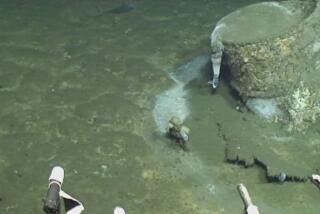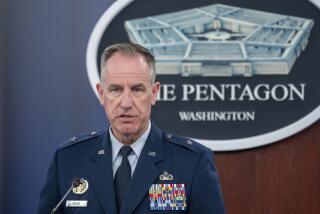Face the Uranium Issue
At this moment, Air Force A-10 Warthogs are probably strafing Iraqi tanks with ammunition made of depleted uranium. For every minute a pilot holds down the trigger of a 30-millimeter Gatling gun, up to 3,900 bullets tear into enemy lines.
Thereâs no question that these armor-piercing munitions are effective. Nor, however, is there a question that each fragment adds minutely to the 320 tons of radioactive ordnance that allied forces blasted into the soil of Iraq, Kuwait and Saudi Arabia during the 1991 Persian Gulf War. When the dust settles at warâs end, the military must stop dodging legitimate concerns about the long-term environmental and health hazards posed by depleted uranium.
No evidence supports some veteransâ charge that these âsilver bulletsâ contributed to the array of sicknesses known as Gulf War syndrome, or that the ammunition played a role in what some Iraqi officials have characterized as soaring rates of cancer and childhood leukemia in that country.
And most experts say the metal -- whose radioactivity is reduced or âdepletedâ to about 40% that of freshly mined uranium as technicians forge it from nuclear-waste material left over from making nuclear weapons and fuel -- probably doesnât trigger leukemia and other cancers, as exposure to plutonium can.
However, when depleted uranium burns upon penetrating its target, it turns into a fine dust that can remain highly concentrated in the environment. Pentagon officials have failed to squarely address the concerns of experts such as Malcolm Hooper, a chemistry professor studying illnesses from the first Gulf War for the British, who warns that the dust, if ingested, can cause serious respiratory, renal and vision problems.
Last week, the United Nations Environment Program released a study on the effects of the depleted uranium fired during the 1995 NATO airstrikes on Bosnia. The report found no evidence of a link between the heavy metal and what some medical experts say are high cancer rates among the soldiers who were peacekeepers in Bosnia. The report did say that since most of the depleted-uranium ammunition was embedded in the dirt, it might pose a contamination risk to ground and drinking water. The studyâs authors called upon NATO to disclose its bombing coordinates, so health officials in the region could try to dredge up the shards and dispose of them.
In the 1960s, the United States used an herbicide called Agent Orange to defoliate the jungle in Vietnam. In postwar years, about 60,000 veterans claimed they had been harmed because the chemical contained the lethal poison dioxin.
The experience has left many veterans suspicious. Such suspicions may prove unfounded with depleted uranium, but history shows the importance of putting them to rest through full and candid disclosure.
More to Read
Sign up for Essential California
The most important California stories and recommendations in your inbox every morning.
You may occasionally receive promotional content from the Los Angeles Times.










